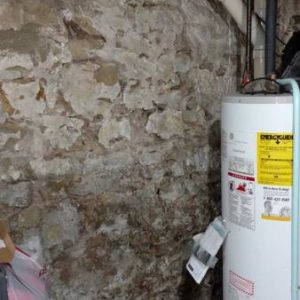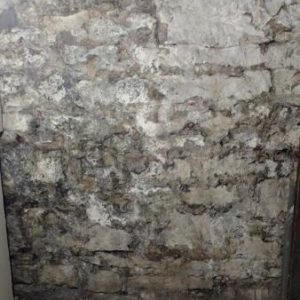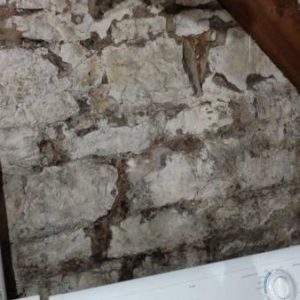Hey all. Long story short I have discovered by an air quality test a mold issue in my basement. Pretty much the basement is going to be gutted. I am worried about the foundation work they are going to do. I have a stone foundation with crumbly, brittle, sandy layer on the interior wall. Apparetnly this is normal? Apparently this inside layer was applied to hold the mortar between the stones in place? Not exactly sure but the company is going to be scrapping the foundation walls and im sure get all the sandy, crumbly material off. Then they are going ot apply antimicrobial coating, etc for the mold issue. Do I have to tell them certain techniques with a stone foundation or do the stones need re-pointing or mortar mix added or anything? Just dont want to have a foundation structure issue in the long run. Here is a pic or two to show what the walls look like currently before the job gets underway. Thanks for the insight on my foundation! I need all the info i can get!!
Discussion Forum
Discussion Forum
Up Next
Video Shorts
Featured Story

The Big Beautiful Bill could do away with much of the Inflation Reduction Act, including the 25C, 25D and 45L tax credits.
Highlights
"I have learned so much thanks to the searchable articles on the FHB website. I can confidently say that I expect to be a life-long subscriber." - M.K.
Fine Homebuilding Magazine
- Home Group
- Antique Trader
- Arts & Crafts Homes
- Bank Note Reporter
- Cabin Life
- Cuisine at Home
- Fine Gardening
- Fine Woodworking
- Green Building Advisor
- Garden Gate
- Horticulture
- Keep Craft Alive
- Log Home Living
- Military Trader/Vehicles
- Numismatic News
- Numismaster
- Old Cars Weekly
- Old House Journal
- Period Homes
- Popular Woodworking
- Script
- ShopNotes
- Sports Collectors Digest
- Threads
- Timber Home Living
- Traditional Building
- Woodsmith
- World Coin News
- Writer's Digest





















Replies
It's unclear why the company would be scraping the walls, when stone doesn't mildew. If there is leakage through the wall that might require work, but that should be done by stone guys (if there are any left), not a mildew abatement crew.
As to scraping, it all depends on how sound the wall is and how hard they dig. If they remove a significant amount of the tuck-pointing then that will need to be redone (by a knowledgeable person). For the first inch or so tuck-pointing is cosmetic, but after that it's structural.
the stone itself may not mildew but the layer of loose sand, gravel loose debris on the interiror wall is. There was a water issue but the gutters and grade of ground has been corrected. The guy took a loose chunk off with his hand and the smell from that piece was a distinct odor, musty, mold smell. So that is why they are scrapping all that off of the foundation stone walls.
So what your saying is this outter crumbly layer is pointless and un-needed and can be scrapped without problem? Correct me if im wrong but the tuck-pointing is the hard mortar inbetween the stones filling the gaps and holding them together? and if this is disturbed too deep then that is a different issue?
Thanks for your reply!
Mike
The moisture that caused the flaking crumbly mess probably came from the outside. In essence it pushed that page coat off, broke the bond etc. Moisture trapped from drying out leads to the mildew stink.
so, you corrected the source of the problem, the work you do should last.
If the moisture problem wasn't corrected properly, than the work will fail. Whatever coating they apply could most likely peal off as well.
most waterproofing correction is best done at the outside. Minor detailing and cosmetics follow.
Understand that there are three different types of stone walls -- dry laid, cement mortared, and something else which one might call "wishfully mortared".
Dry laid had no mortar used while laying but likely was tuck-pointed after the fact. This takes careful fitting to do right. Solid cement mortared walls have the stones set in mortar pretty much like brick, only (important point!) a different type of mortar must be used. "Wishfully mortared" walls had mortar used during construction, but the stuff used (perhaps in combo with the type of stone) set things up to disintegrate as soon as the builder's back was turned, or else the stone is simply too soft for the duty.
Hard to guess which situation you have.